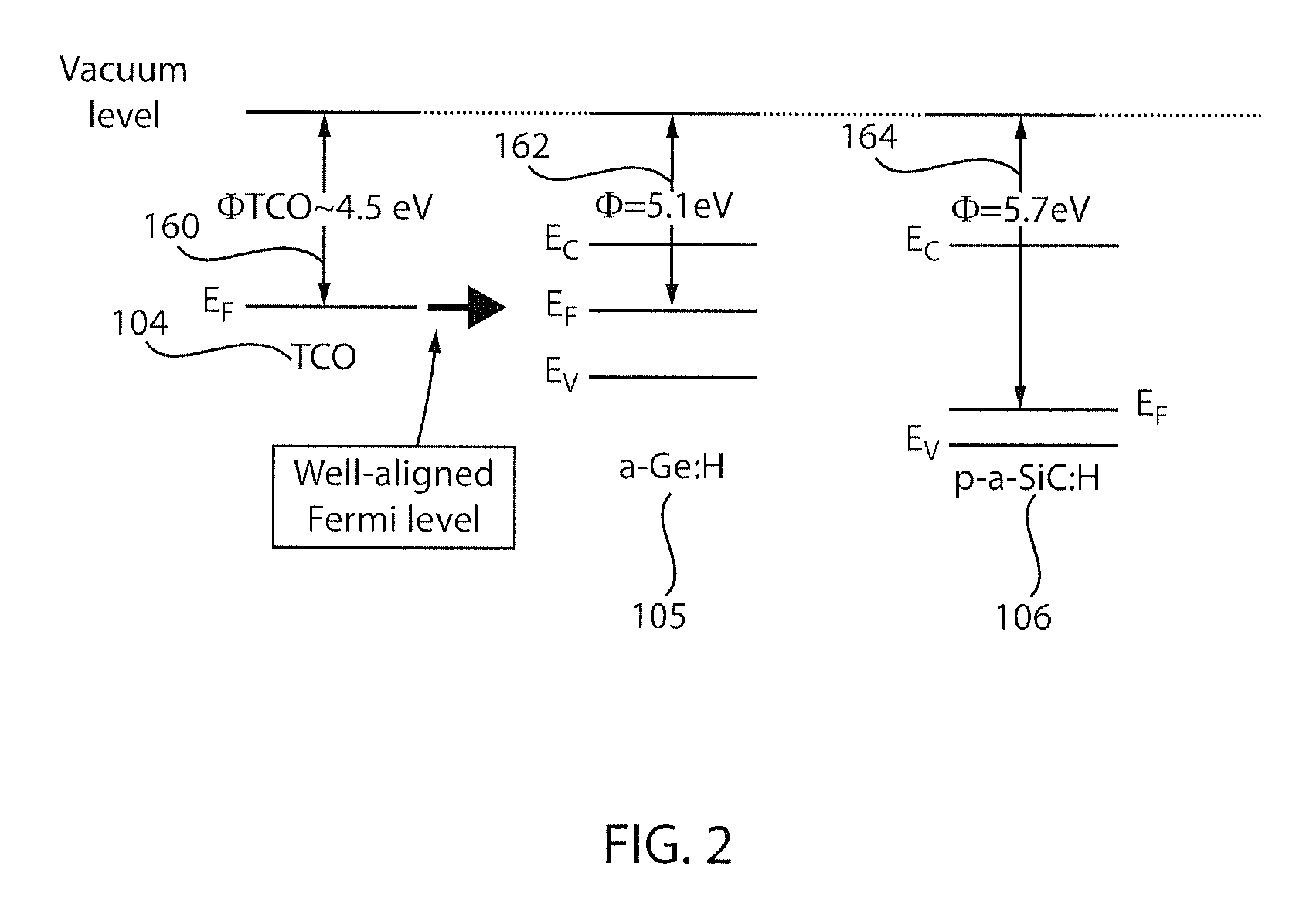Reduced light degradation due to low power deposition of buffer layer
a buffer layer and light degradation technology, applied in the field of photovoltaic devices and methods for fabrication, can solve the problems of reducing the efficiency of solar cells and negatively affecting the quantity of solar cells, and achieve the effect of greater resistance to light induced degradation
- Summary
- Abstract
- Description
- Claims
- Application Information
AI Technical Summary
Benefits of technology
Problems solved by technology
Method used
Image
Examples
Embodiment Construction
[0017]In accordance with the present principles, methods and devices are presented that provide light induced degradation resistance. Light induced degradation occurs in a semiconductor structure when the structure becomes saturated by incoming radiation (light soaked). The structure begins to degrade due in part to the reconfiguration of hydrogen atoms, which results in passivation and bond breaking between constituent materials. This degradation process becomes prominent if there exists a band offset at a p-i interface and / or at a transparent conductive oxide (TCO) to p+ interface.
[0018]A band offset describes the relative alignment (e.g., misalignment) of the energy bands between materials at a semiconductor heterojunction. Band offset at the TCO / p+ layer is unavoidable since all developed TCO films are n-type. In particularly useful embodiments, photovoltaic devices are constructed using materials and processes that reduce the risk of light-induced degradation. In one example, a...
PUM
 Login to View More
Login to View More Abstract
Description
Claims
Application Information
 Login to View More
Login to View More - R&D
- Intellectual Property
- Life Sciences
- Materials
- Tech Scout
- Unparalleled Data Quality
- Higher Quality Content
- 60% Fewer Hallucinations
Browse by: Latest US Patents, China's latest patents, Technical Efficacy Thesaurus, Application Domain, Technology Topic, Popular Technical Reports.
© 2025 PatSnap. All rights reserved.Legal|Privacy policy|Modern Slavery Act Transparency Statement|Sitemap|About US| Contact US: help@patsnap.com



